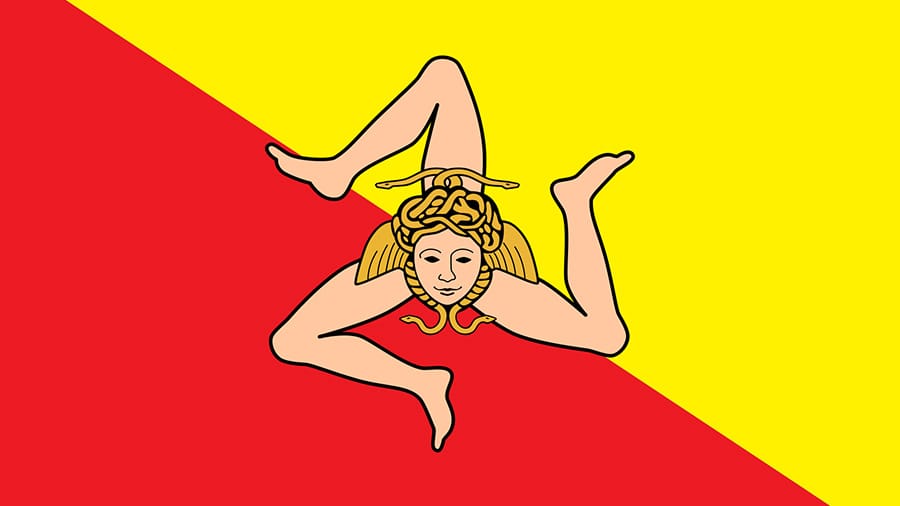The three-legged trinacria is an ancient symbol. Researches trace its origins to the Phoenician sun-god Baal, and also to the Greek Apollo: the legs signify the sun’s course through the skies and the three main seasons of the year. They are also taken to represent the triangular shape of Sicily, with its three main headlands. After their successful colonisation of the 8th century BC, the Greeks dedicated the island to Apollo, placing the god’s head in the centre of the symbol, with his totem snakes (he gave two entwined on a stick to his son Asclepius). An alternative interpretation contends that the head represents the Gorgon Medusa. The device was revived in modern times when Frederick II of Aragon had himself crowned “King of Trinacria”, adopting the ancient Greek name for the island. The emblem is famously also used by the Isle of Man (but without the head, and with armour-clad legs). It was perhaps chosen by Alexander III of Scotland and Man in 1266, when he married a Sicilian princess and all things Sicilian were considered worthy of emulation. The emblem set on a red and yellow shield, with three ears of wheat emerging from the winged head, is now the logo of the Regione Siciliana.







